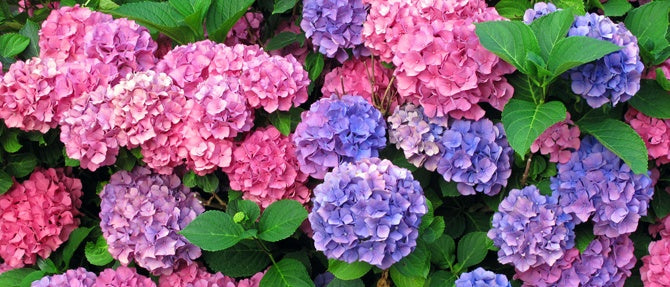Hydrangeas are pretty amazing plants! Not only are they stunning features in the garden, but their flower colour can be altered by changing the soil acidity. Sometimes referred to as the ‘mood ring of the garden’, hydrangeas can change from pink to blue (and shades in between) depending on their growing environment. Obviously this is easier to control if the plant is grown in a pot, but the colour can also change in garden planted plants too.
Want blue hydrangeas?
- First of all it is important to make sure you choose a variety of hydrangea that can change colour. Only the flowers of bigleaf (Hydrangea macrophylla), also known as mopheads and lacecaps, can change color. Other types such as oakleaf hydrangeas or hydrangeas ‘Annabelle’ only bloom in white or cream.
- For true blue flowers, the soil needs to be acidic (pH of 5.5 or lower). If your existing soil is more alkaline then you will need to increase the acidity, this can be done by adding organic acidifiers including sulfur and sulfate soil additives. There are also easy-to-use soil additives made specifically for hydrangeas.
- To maintain blue blooms, the soil acidity will need to be monitored and soil additives will need to continue to ensure the soil stays acidic.
Want pink hydrangeas?
- Pink hydrangeas require more alkaline soil (pH of 6.5 or higher).
- To make your soil more alkaline you can add lime, wood ashes and/or ground oyster shells, but it can take 2-3 months for the full effect to be noticed.
Want purple hydrangeas?
- For purple blooms (or a mix of blue and pink flowers on the same plant), the pH of the soil must be 5.5 and pH 6.5.

